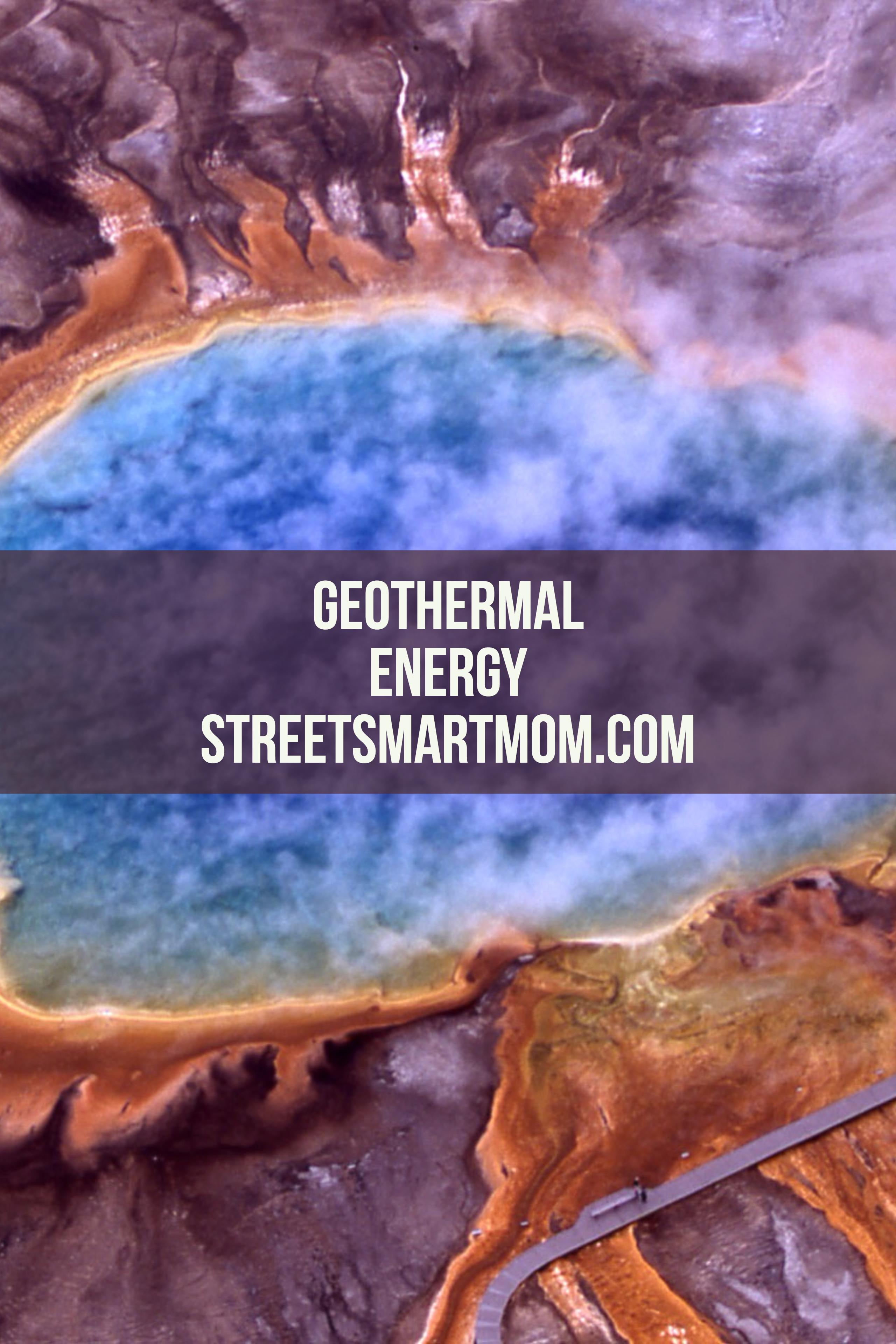Geothermal Energy
Hey Smart Moms!
Ready for more on going green? I have to just tell you all how much I love green energy. Secretly I hope that talking about it enough will open people’s eyes, and we can make some serious headway with our energy sources. Ok, maybe it’s not really a secret. But I just love this earth so much and I want to take care of it! Therefore, today, I am talking about geothermal energy. And it’s very cool…(that’s a joke. Don’t worry, you’ll get it later.)
What is geothermal energy?
Well to start, it’s awesome!
Basically geothermal energy is energy converted from the Earth’s heat. This energy resides from anywhere between hot water pools and deep down below the Earth’s crust where magma gurgles.
Neat! If we could tap into the resource more fully, we would have renewable, clean, amazing energy to last us a very long time.
How does geothermal energy work?
Geothermal energy is simply about capturing steam from hot water to power electric generators.
Geothermal heat pumps consist of the heat pump, the air delivery system, and a pipe heat exchanger system which is buried under the ground. (1) The pump works to cool and heat a building. In the summer, the pump removes hot air from the building through the exchanger system. This can also provide a source of free hot water during the summer months. In the winter, the heat pump delivers heat to the house through the exchanger system.
Power plants drill holes into rocks in order to better capture steam. (2)
The geothermal energy system seems less technical than some of the green energy converter systems.
What can geothermal energy be used for?
Geothermal energy is great for heating buildings, industrial processes (pasteurizing milk), heating water, and aiding greenhouse plant growth.
Geothermal energy seems to be more localized than other forms. And it seems to be able to deliver electricity to systems further away. It appears to me that geothermal has to be closer to its source to work its magic.
How are geothermal energy plants developed?
For the U.S., hot geothermal bodies of water are in the westward states, as well as in Hawaii and Alaska.
Geothermal plants often power turbines/generators by using steam taken from a body of water. They also use water to boil a substance (fluid), which vaporizes in the boiling and causes a turbine to turn. (1)
Now I’m going to get a little more technical for this…
Geothermal power plants regularly follow three designs. (2)
1) The dry steam system uses the steam from hot water. It goes through the turbine and into a condenser, where the steam is turned to water. The water that is being pulled is hot and, after the heat is used, the now-warm-water is returned to the heat source so that the resource life will be prolonged.
2) Another system depressurizes the hot water and turns it to steam which is then used to power the turbine.
3) The binary cycle system passes hot water through a heat exchanger and is then used to heat a liquid (isobutane) in a closed loop cycle. Isobutane is used because it boils at a lower temperature than water, therefore, it more easily converts to steam in order to power the turbine.
What are potential problems?
Like anything, geothermal energy has its problems.
Three to five miles below the Earth’s surface there is something called hot dry rock.
It is true that we have figured out a way to tap into this heating source…
Cold water is poured through one well and pushed through the heated rock. This causes the water to become hot and then it exits at the surface through a different well.
However, we have no real application for the technology used to heat water like this.
There is also no technology that allows us to gather energy from the magma, or the very deep and most potent source of geothermal energy.
So that can be an obstacle to really using geothermal energy efficiently.
Why geothermal energy?
You may be asking yourself why geothermal energy is worth it.
As of 2013, geothermal energy created about 68 billion kilowatt-hours of electricity. This amount is enough to meet the electric yearly needs of 6 million average U.S. households. (2)
In some countries, such as Iceland and El Salvador, geothermal energy accounts for 25% of electricity produced. (2) These are smaller countries of course, but the idea of supplementing with green energy to cut back on pollution is exemplified by these countries using their resources.
It is awesome!
Technology is developing to make geothermal energy more accessible and powerful. Just because we aren’t at full power yet, doesn’t mean that’s how it will always be.
While geothermal energy has room for development, it is promising. As a green energy, it is clean, renewable, and prevents the continuation of fossil fuel greenhouse gas emissions.
Investing in green energy has potential to keep energy costs down, keep the air clean, and better our lives!
(1) http://www.renewableenergyworld.com/geothermal-energy/tech.html



